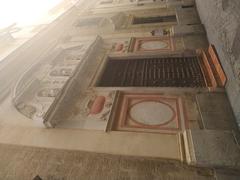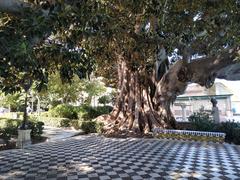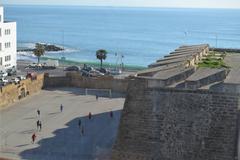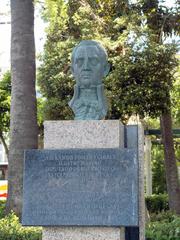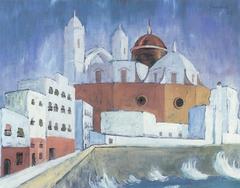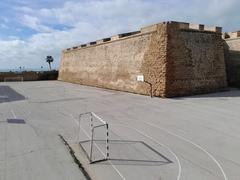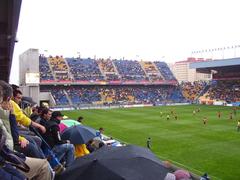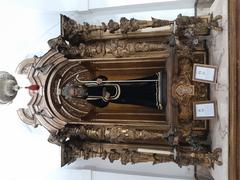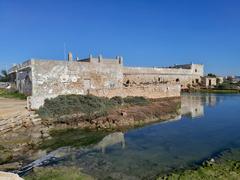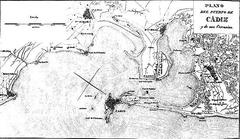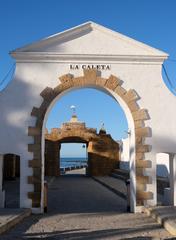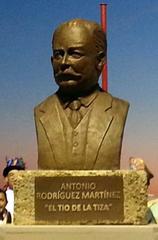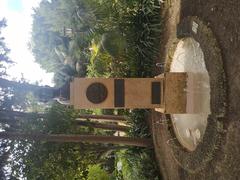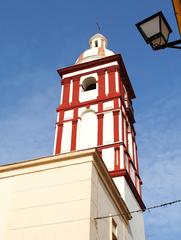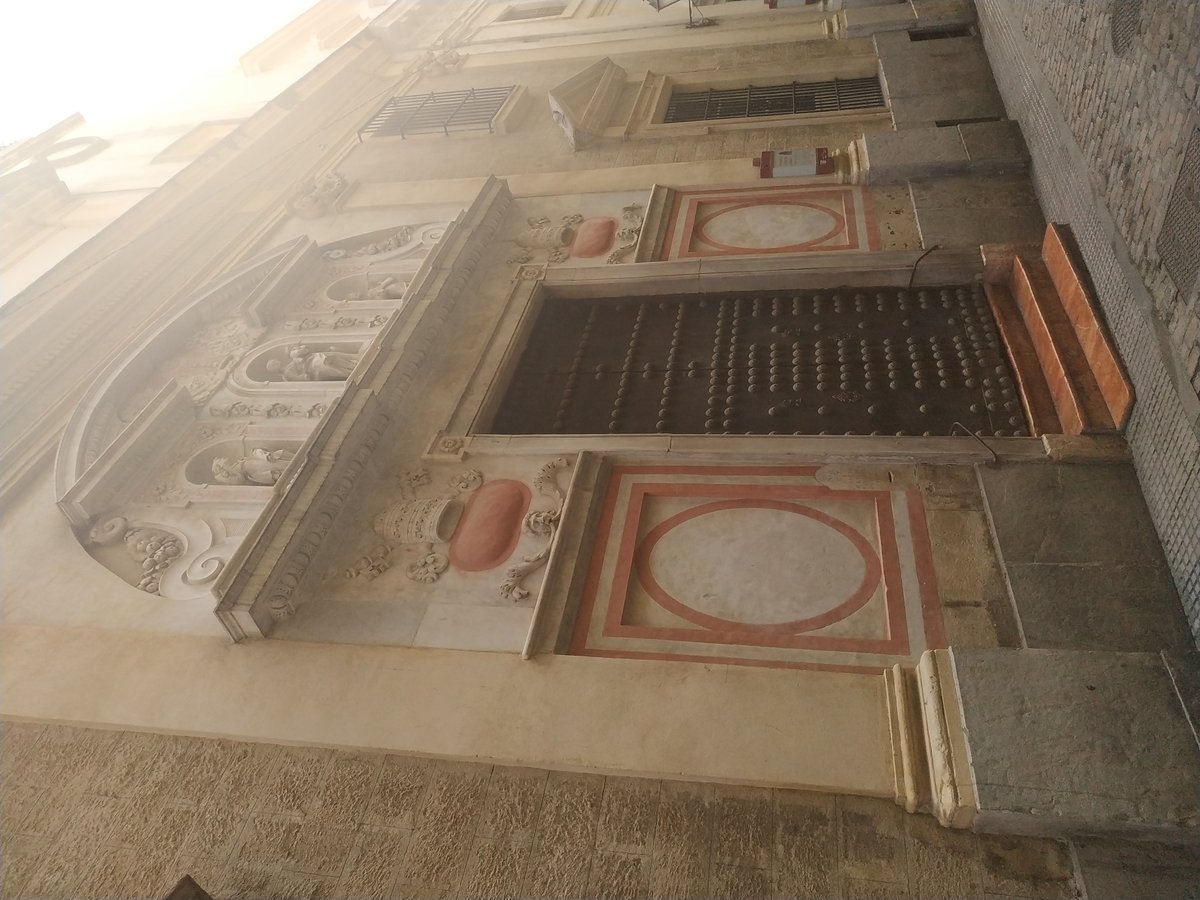
Iglesia Del Rosario Visiting Hours, Tickets, and Guide to Cádiz Historical Sites
Date: 14/06/2025
Introduction: The Cultural and Historical Heart of Cádiz
Situated in the historic center of Cádiz, the Iglesia del Rosario stands as both a spiritual sanctuary and a testament to the city’s rich multicultural past. Initially established in the 16th century as a chapel for Augustinian nuns, the site evolved into a focal point for the “cofradía de los Morenos”—a brotherhood founded by free Black men and women who shaped much of the church’s enduring social and religious identity. Over the centuries, architectural transformations, notably the 18th-century redesign by Torcuato Benjumeda, have endowed the church with its striking neoclassical Latin cross layout and Genoese Baroque marble façade.
Beyond its architectural grandeur, the church is intimately tied to Cádiz’s collective memory. The Virgin of the Rosary, enshrined here, is revered as the city’s Patroness and Protector, especially following events such as the 1755 Lisbon earthquake. Annual rituals, including the famed October 7th procession, continue to unite Cádiz’s community in devotion and celebration. The church’s central location—just steps from landmarks like the Cádiz Cathedral and Plaza de San Juan de Dios—makes it an essential destination for anyone seeking to experience the spiritual and cultural life of Cádiz (turismo.cadiz.es, Dominicos Hispania, diariodecadiz.es).
Contents
- Introduction
- Historical Origins and Early Community
- Architectural Evolution and Artistic Heritage
- Devotional Life and Cultural Impact
- Visiting Information: Hours, Tickets, Accessibility
- Practical Tips and Nearby Attractions
- Frequently Asked Questions (FAQ)
- Plan Your Visit: Resources and Final Recommendations
Historical Origins and Early Community
The roots of the Iglesia del Rosario reach back to the 16th century, coinciding with Cádiz’s rise as a transatlantic port. The original chapel, built for Augustinian nuns, soon became the spiritual home of the “cofradía de los Morenos,” the city’s first documented Black religious brotherhood (diariodecadiz.es). This community’s devotion to the Virgin of the Rosary forged a tradition that endures to this day. Historical chronicles, such as Agustín de Horozco’s 1591 account, detail the peaceful transition of the chapel from the nuns to the Morenos, who established their own unique spiritual and social practices.
By the 17th century, with the arrival of Dominican friars, the brotherhood and its cherished image of the Virgin were relocated to the new Dominican convent, cementing the church’s place at the heart of Cádiz’s religious life (Dominicos Hispania).
Architectural Evolution and Artistic Heritage
The Iglesia del Rosario is a showcase of neoclassical and Baroque artistry. Architect Torcuato Benjumeda’s 18th-century intervention gave the building its Latin cross floor plan, three naves divided by Doric pillars, and a grand Genoese Baroque marble façade punctuated by Ionic pilasters and a sculptural group of the Virgin flanked by Saints Peter and Paul (turismo.cadiz.es).
Inside, the main altarpiece enshrines the Virgin of the Rosary and is complemented by side altarpieces dedicated to San Servando and San Germán, attributed to Francisco de Villegas. The lateral walls feature masterworks by Juan de Herrera, such as representations of the Holy Trinity and Saint Ildefonso. Additional highlights include a Genoese crucifix and a polychrome Virgin of the Angels by Benito de Hita del Castillo.
Artistic heritage is also evident in the Camarín de la Virgen del Rosario, an ornate exterior shrine projecting from the church’s headwall, and in the marble dado and stucco decorations from the 18th century.
Devotional Life and Cultural Impact
The “Hermandad del Rosario,” rooted in the city’s Black and freedmen communities, played a pivotal role in fostering devotion and social cohesion (institucional.cadiz.es). The Virgin’s significance grew after miraculous interventions during epidemics in 1681 and 1730, and most notably after the 1755 Lisbon earthquake, when processions imploring her protection were believed to have saved Cádiz from disaster. The Virgin’s status as Patroness and Protector was formalized by the city council and later ratified by Pope Pius IX.
Today, the church remains a vibrant center for religious and civic life. Annual processions on October 7th and Corpus Christi, decorated with flowers and accompanied by music and civic authorities, are major highlights of Cádiz’s calendar. The Virgin also holds the honorary titles of “Alcaldesa Perpetua” (Perpetual Mayoress) and “Capitán General,” reflecting her deep integration into both civic and military traditions, including veneration by the Spanish Navy since the 16th century.
Visiting Information: Hours, Tickets, Accessibility
Opening Hours:
- Monday to Saturday: 10:00 AM – 1:30 PM and 5:00 PM – 8:00 PM
- Sundays and public holidays: Hours may vary due to services. Always confirm via the official tourism website or by contacting the parish.
Admission:
- Entry is free; donations are encouraged to support maintenance and restoration.
- Guided tours (in Spanish and English) are available via local operators or by arrangement at the church. Some tours may have a nominal fee.
Accessibility:
- The church is accessible for visitors with reduced mobility. Ramps are available at the main entrance; contact staff in advance for assistance.
Location and Getting There:
- Centrally located in Cádiz’s pedestrianized old town, near the Cádiz Cathedral and Plaza de San Juan de Dios.
- Reachable on foot from train/bus stations or by local bus; parking is limited nearby due to narrow streets.
Visitor Etiquette:
- Modest attire is required (shoulders and knees covered).
- Photography is permitted (no flash/tripods) except during services—respect worshippers’ privacy.
Practical Tips and Nearby Attractions
- Combine your visit with nearby landmarks: Cádiz Cathedral, Plaza de las Flores, and the Roman Theatre (A Ticket to Take Off).
- Best visiting times are late morning or early evening for fewer crowds and optimal light.
- Rest and refresh at cafés and tapas bars in the surrounding streets, or enjoy local produce at the nearby Mercado Central.
- Public restrooms are available near major plazas.
- Safety: Cádiz’s historic center is safe, but stay alert for pickpockets during crowded events.
Frequently Asked Questions (FAQ)
Q: What are the visiting hours of Iglesia del Rosario?
A: Monday to Saturday, 10:00 AM–1:30 PM and 5:00 PM–8:00 PM. Sundays and holidays may differ. Always check ahead.
Q: Is there an entrance fee or do I need tickets?
A: Entry is free; donations are appreciated. Guided tours may have a fee.
Q: Are guided tours available?
A: Yes, in Spanish and English, via local operators or by church arrangement.
Q: Is the church accessible for visitors with disabilities?
A: Yes, ramps and assistance are available; contact the parish for specific needs.
Q: Can I take photographs inside the church?
A: Yes, without flash or tripods, except during services.
Q: What attractions are nearby?
A: Cádiz Cathedral, Plaza de San Juan de Dios, Roman Theatre, and Mercado Central.
Q: When are the main religious events held?
A: Processions on Corpus Christi and October 7th (feast of Our Lady of the Rosary).
Plan Your Visit: Resources and Final Recommendations
For up-to-date visiting hours, guided tour options, and event schedules, consult the official Cádiz tourism website and Dominicos Hispania. Local hotels and visitor centers provide maps and guidance.
Travel tips:
- Wear comfortable shoes for exploring the old town’s cobbled streets.
- Carry a water bottle, especially in summer.
- If traveling during festivals, arrive early due to crowds and possible area restrictions.
Enhance your visit:
- Download the Audiala app for audio guides and real-time tips.
- Follow Cádiz tourism and heritage organizations on social media for updates on events and tours.
References and Further Reading
- Iglesia del Rosario Cádiz: Visiting Hours, Tickets & Historical Guide, Turismo Cádiz (turismo.cadiz.es)
- Visiting Iglesia del Rosario in Cádiz: Hours, Tickets, and Cultural Significance, Dominicos Hispania (Dominicos Hispania)
- Origen y devoción de la Virgen del Rosario en Cádiz, Diario de Cádiz (diariodecadiz.es)
- Cádiz travel resources and itinerary ideas (A Ticket to Take Off), Spain Less Traveled
Image suggestions:
- Façade of Iglesia del Rosario in Cádiz showcasing Genoese Baroque marble design
- Main altarpiece of Iglesia del Rosario featuring the Virgin of the Rosary
- Religious procession honoring the Virgin of the Rosary in Cádiz’s historic center
